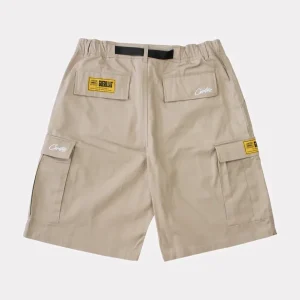Film Blowing Machine: A Comprehensive Guide to Blown Film Extrusion
The film blowing machine, also known as a blown film extrusion machine, is a critical piece of equipment in the plastic manufacturing industry. It produces plastic films that are widely used in packaging, agriculture, construction, and everyday products like shopping bags and food wraps. The film blowing process combines extrusion and inflation techniques to form thin plastic films with consistent thickness, strength, and clarity.
This article provides an in-depth look into the film blowing machine, its components, working principle, types, advantages, applications, and maintenance.
What is a Film Blowing Machine?
A film blowing machine is an industrial system that melts plastic resin (usually polyethylene like LDPE, LLDPE, or HDPE) and extrudes it through a circular die to form a thin tube. This tube is then inflated using air to form a bubble, cooled, collapsed, and finally wound into rolls as plastic film.
The process is technically known as blown film extrusion and is one of the most common methods used to manufacture plastic films.
How Does a Film Blowing Machine Work?
The blown film extrusion process involves several critical steps:
1. Feeding and Melting
Plastic granules (resin) are fed into a hopper, which leads them into a barrel containing a rotating screw. The screw conveys the material forward while heating elements around the barrel melt the plastic.
2. Extrusion
The melted plastic is pushed through a circular die, forming a continuous tube of molten polymer.
3. Blowing (Bubble Formation)
Compressed air is introduced into the center of the tube through the die head, inflating the plastic into a thin-walled bubble. The bubble’s size and thickness are controlled by the air pressure, die gap, and take-up speed.
4. Cooling
The inflated bubble is cooled using air rings or cooling towers. Proper cooling is essential for controlling film clarity, strength, and thickness.
5. Collapsing and Flattening
The bubble passes through nip rollers and collapsing frames, which flatten the film into two layers. This flattened film is called a lay-flat tube.
6. Winding
The lay-flat film is guided to a winder, where it is rolled up for storage or further processing, such as cutting or printing.
Key Components of a Film Blowing Machine
1. Extruder (Barrel and Screw)
Melts and conveys the plastic resin. The design and length-to-diameter ratio of the screw impact melting efficiency and film quality.
2. Die Head
Shapes the molten plastic into a tubular form and allows air to enter for inflation. Some machines feature rotating die heads for better film uniformity.
3. Air Ring
Cools the blown bubble evenly using controlled airflow, crucial for maintaining consistent film thickness.
4. Bubble Cage / Collapsing Frame
Supports and stabilizes the film bubble during cooling and collapsing.
5. Take-Up Unit (Nip Rollers)
Pulls the film upward and flattens it. The speed can be adjusted to change film thickness.
6. Winder
Rolls the finished film onto cores for easy handling and transport.
Types of Film Blowing Machines
Film blowing machines come in several configurations depending on output capacity, film properties, and application:
1. Mono-Layer Film Blowing Machine
Produces single-layer films. Simple, low-cost, and suitable for basic packaging like shopping bags or liners.
2. Multi-Layer Film Blowing Machine (Co-Extrusion)
Combines multiple extruders to produce layered films (e.g., 3-layer, 5-layer). Offers improved barrier properties, strength, and flexibility. Common in food packaging and industrial applications.
3. High-Speed Film Blowing Machine
Designed for mass production with high output and fast cooling. Ideal for large-scale operations.
4. Rotary Die Film Blowing Machine
Has a rotating die head to ensure uniform thickness across the film width, improving quality and film flatness.
Advantages of Using a Film Blowing Machine
1. Cost-Effective
Blown film extrusion is more economical for producing thin plastic films compared to casting or calendaring methods.
2. Versatile
Can produce films with different properties (e.g., high strength, clarity, barrier performance) using various polymers or co-extrusion layers.
3. Customizable
Film thickness, width, and formulation can be adjusted to meet specific product needs.
4. Compact Design
Occupies less space compared to other film production techniques, especially mono-layer systems.
5. Energy Efficient
Modern machines are designed for efficient resin usage and minimal waste generation.
Applications of Blown Film
Blown films are used across many industries:
- Packaging: Grocery bags, food wrappers, stretch film, shrink film, and garbage bags.
- Agriculture: Mulch film, greenhouse film, and irrigation film.
- Construction: Vapor barriers, protective sheeting, and insulation layers.
- Medical and Hygiene: Disposable gloves, sanitary product back sheets, and medical packaging.
- Retail and Consumer: Carrier bags, cling films, and garment bags.
Maintenance and Operational Tips
1. Regular Cleaning
The die head and barrel should be cleaned regularly to prevent resin build-up and contamination.
2. Temperature Monitoring
Maintaining consistent barrel and die temperatures ensures uniform film quality.
3. Lubrication
Screws, motors, and gearboxes must be properly lubricated to prevent wear and tear.
4. Calibrate Air Pressure
Uneven air pressure can cause bubble instability or film breakage.
5. Inspection of Rollers and Winder
Worn-out rollers can lead to film wrinkles or tracking issues.
Conclusion
A film blowing machine is a vital asset in the plastic processing industry, offering a reliable and efficient way to produce a wide variety of thin plastic films. Whether for simple mono-layer bags or high-performance multi-layer packaging films, the versatility of blown film extrusion makes it indispensable.
With advancements in automation, material science, and machine design, modern film blowing machines deliver higher productivity, better film quality, and energy efficiency. For manufacturers looking to produce flexible packaging or other plastic films, investing in a high-quality film blowing machine is a strategic move toward consistent, scalable, and profitable production.


